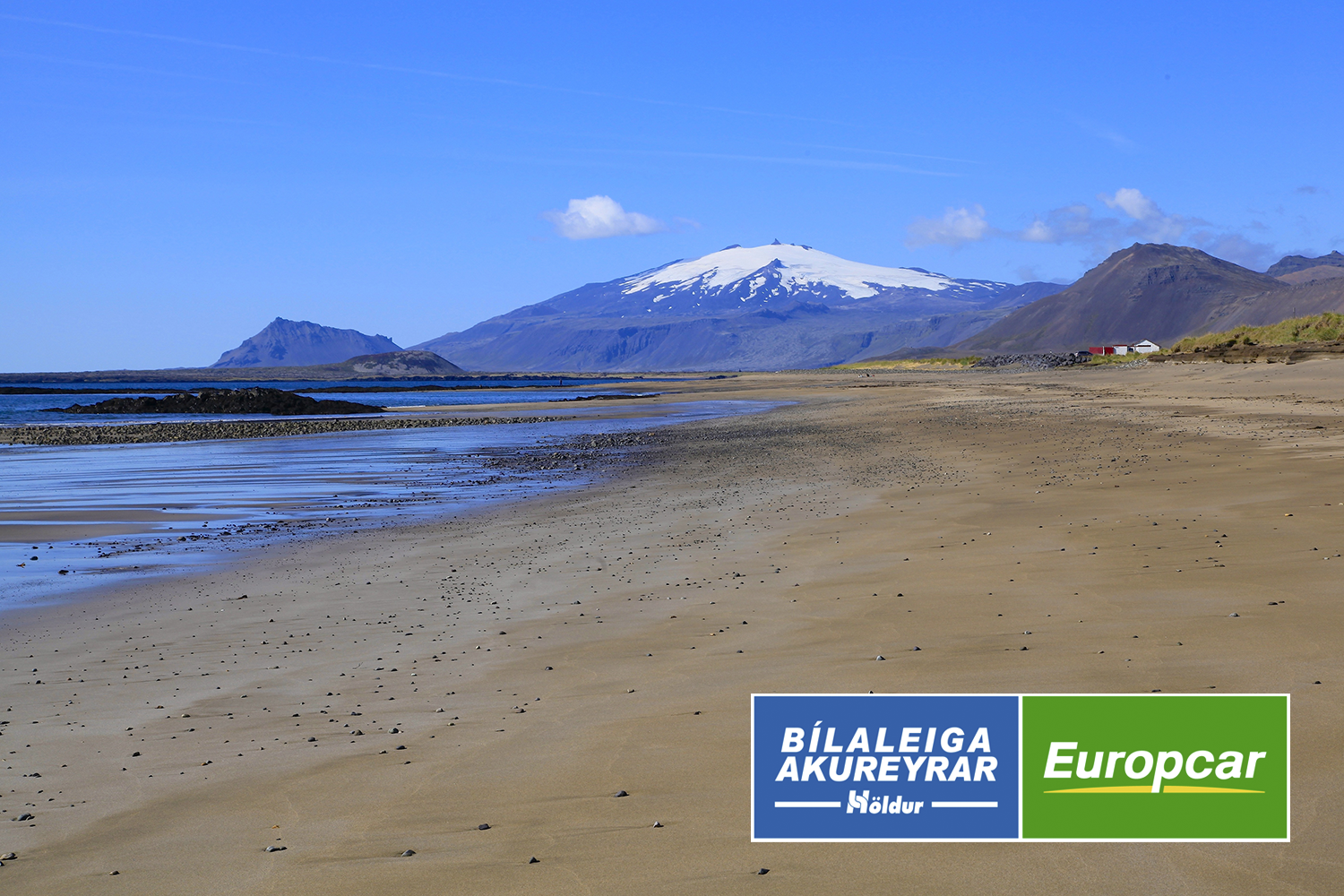- Vehicle Guide
- Driving in Iceland
- Our services
- Locations & Hours
- Travel Inspiration
- South Iceland: A complete guide
- Reynisfjara Beach in Iceland - Your Guide to a Safe Visit
- North Iceland: A Complete Guide for Drivers
- East Iceland A Complete Guide for Drivers
- West Iceland The Complete Driver’s Guide
- Your Ultimate Guide to Exploring Iceland’s Ring Road
- Driving the Diamond Circle in Iceland: Your Ultimate Guide
- Driving Iceland's Golden Circle: Your Ultimate Guide
- A 10-Day Itinerary in Iceland: Tips + Ideas
- The Perfect Itinerary for 7 Days in Iceland
- The Best Time to See the Northern Lights in Iceland with a Rental Car
- Renting a Camper in Iceland: The Complete Guide
- Getting to Iceland: A Comprehensive Guide on How to Reach the Land of Fire and Ice
- Nature Bath Locations in Iceland: A Complete Guide
- Iceland with Kids: A 5-Day Self-Drive Itinerary
- Winter Driving in Iceland: A Comprehensive Overview for Foreign Tourists
- The Total Solar Eclipse in Iceland – August 12, 2026
- Exploring Iceland's National Parks on a Self-Drive Adventure
- Exploring Iceland's Wonders: A Comprehensive Guide to Activities and Car Rentals
- Springtime in Iceland – Your Comprehensive Travel Guide
- Exploring Iceland's Most Popular Highland Routes
- The Pearls of Westfjords: The Ultimate Guide
- Exploring Iceland's Hidden Gems | Off-the-Beaten-Path Adventures
- Driving in Iceland in June: Tips for a Safe and Scenic Summer Road Trip
- Driving in Iceland in July: Tips, Routes & Rentals
- Driving in Iceland in August: Late-Summer Freedom on the Open Road
- Guide to Skaftafell Iceland Self-Drive A Journey Through Fire and Ice
- Eco-Friendly Road Trips in Iceland, Sustainable Travel Tips
- Photographer’s Paradise Top Scenic Drives in Iceland for Stunning Shots
- Iceland's Folklore and Legends A Road Trip Through Mythical Sites
- Iceland’s Midnight Sun and How to Make the Most of 24-Hour Daylight
- Chasing Waterfalls: A Road Trip to Iceland’s Most Spectacular Cascades
- Iceland's Volcanic Wonders: A Self-Drive Tour of Active and Dormant Volcanoes
- Tee Off in the Land of Fire and Ice: A Guide to Golfing in Iceland
- Birdwatching in Iceland: Puffins and Beyond
- Iceland’s Diverse Beaches: Beyond the Black Sands
- Icelandic Horses: The Unique Breed of the North
- Beyond the Ring Road: Iceland’s Hidden Scenic Drives
- Iceland’s Ice Caves: A Year-Round Adventure
- Wildlife Watching in Iceland: Where and When to Go
- Iceland’s Hidden Hot Springs: A Self-Drive Guide to Secret Soaks
- Navigating Iceland’s Weather: What to Expect Each Season
- Tröllaskagi Peninsula: Iceland’s Mountainous Marvel — A Scenic Road Trip with Höldur
- Mastering Iceland's Roundabouts: A Driver’s Guide
- Essential Tips for Renting a Car in Iceland
- Navigating Iceland’s One-Lane Bridges: Your Guide to Safe and Scenic Crossings
- Exploring Iceland’s Film Locations by Rental Car
- 5 Must-Visit Destinations Within Two Hours of Keflavík Airport
- Seasonal Car Rental Tips for Iceland’s Summer Festivals
- Understanding Iceland's F-Roads: How to Drive Safely Into the Highlands
- What Makes Iceland Unique: Top 15 Highlights for an Unforgettable Journey
- Driving and Hiking in Harmony: Explore Iceland's Natural Wonders with Höldur Car Rental
- What is the Best Car to Rent in Iceland?
- Avoiding Common Car Rental Mistakes in Iceland
- Making Your Car Rental in Iceland Child-Friendly: Tips for Stress-Free Family Travel
- Exploring Akureyri, Iceland’s Northern Gem, with EasyJet and Europcar
- Renting a Manual or Automatic Car in Iceland
- Discover the Arctic Coast Way in Iceland with Höldur Car Rental
- How to Save on Fuel Costs During Your Iceland Road Trip
- Electric vs. 4x4 Rentals in Iceland: Which is Right for Your Trip?
- Top Scenic Detours Off Iceland's Ring Road
- Top Safety Tips for First-Time Drivers on Iceland’s Roads
- Cultural Pit Stops Along Iceland’s Ring Road
- Your Guide to Exploring Stuðlagil Canyon by Car: Iceland’s Basalt Beauty Awaits
- Day Trip Ideas From Reykjavik by Rental Car
- Visit Glymur Waterfall: The Ultimate Self-Drive Adventure from Reykjavík
- Discover the Volcanic Wonders of Lake Mývatn by Car
- Discovering the Magic of Snæfellsnes Peninsula by Car
- Your Self‑Drive Guide to Gullfoss Waterfall
- A Guide to Seljalandsfoss Waterfall in Iceland: Explore by Car
- Exploring Reykjanes Peninsula A Self Drive Guide
- Exploring Iceland Landmannalaugar by 4x4
- A Beginner's Guide to River Crossings in Iceland
- Best Car Rental Offers for Iceland’s Summer Adventures
- Your Self‑Drive Guide to Þingvellir National Park
- Your Ultimate Guide to Geysir, Iceland: All You Need to Know
- How to Pay for the Vaðlaheiðargöng Tunnel
- Your Guide to Visiting Jökulsárlón Glacier Lagoon
- The Diamond Beach in Iceland: A Sparkling Wonder Worth Visiting
- Parking fines in Iceland: how to pay and what to do if you receive one
- Where to find overnight parking in Reykjavík: a local’s guide for travellers
- How to park for free in Reykjavík: tips to save on your Iceland trip
- How to pay for parking in Reykjavík - A friendly guide for drivers in Iceland
- Game of Thrones Filming Locations in Iceland: A Self-Drive Guide
- How to Choose the Right Car Rental at Keflavík Airport
- Flying Within Iceland: Your Guide to Domestic Routes and Regional Airports
- Top 3 Must-See Attractions on Iceland's Golden Circle
- Hidden Gems Along the Golden Circle Route
- Your Essential Guide to Iceland: Currency, Culture, and Car Rental Tips
- How to Plan the Perfect Golden Circle Self-Drive Tour
- The Comprehensive Guide to Rental Car Sizes at Keflavik Airport
- Húsafell & Hallmundarhraun: Hidden Lava Field Adventures by Car
- Iceland Weather by Month: What to Expect and How to Drive Safely with Holdur Car Rental
- A Guide to Iceland’s Quirky Roadside Attractions
- Exploring Iceland’s Lava Tubes | Self-Drive Cave Adventures with Höldur Car Rental
- Coolcation in Iceland: Self-Drive Your Summer Escape to the North
- Driving Iceland’s Coastal Roads: A Guide to Lesser-Known Peninsulas
- Top Tips for Driving in Iceland Safely Year-Round
- The Best Rest Stops and Viewpoints Along Iceland's Ring Road
- Driving in Iceland in September: Embrace the Autumn Adventure
- Your Guide to Exploring Fjaðrárgljúfur – South Iceland’s Fairytale Canyon
- Explore Reykholt on a Self-Drive Tour in Iceland
- How to Choose the Right Insurance for Your Iceland Car Rental
- Hiking Múlagljúfur Canyon: Iceland’s Hidden Gem You Can’t Miss
- Understanding Iceland's Weather and How It Affects Driving Conditions
- Dyrhólaey: A Complete Self-Drive Guide to Iceland's Breathtaking South Coast
- Where to See Iceland’s Tectonic Plates Up Close
- Scenic Journey on Kjalvegur Road 35 Reykjavik to Akureyri
- Guide to Visiting Svartifoss with a Rental Car
- Kerið Crater Lake in Iceland: A Self-Drive Guide
- Your Complete Guide to Stokksnes, Iceland with a Rental Car
- Hengifoss Waterfall in Iceland: The Ultimate Self-Drive Guide
- Your Complete Guide to Visiting Skógafoss Waterfall with a Rental Car
- Into the Heart of Þórsmörk: Iceland’s Valley of Thunder
- Dynjandi Waterfall in Iceland: The Ultimate Self-Drive Guide
- Visiting Ásbyrgi Canyon in North Iceland by Car: A Complete Self-Drive Guide
- Driving in Iceland in October: Embrace the Autumn Transition

Iceland Attractions, Travel information
West Iceland: The Complete Driver’s Guide
30.07.2024
West Iceland is known for its dazzling array of natural sights, just to the north of the capital city, Reykjavík. To explore this stunning variety, hire a car and tour the region.
In this guide, you’ll discover the sights not to miss along the way. Plus, you’ll learn some essential tips to make the most of your self-drive adventure.
Need more practical advice? Find out more in our guide to driving in Iceland.
West Iceland: What to see and do
West Iceland is the region that sits between the Westfjords and the city of Reykjavík. You’ll pass it if you’re driving Iceland’s Ring Road, but it’s definitely worth your time to stop and visit the region.
To get you inspired, here are 9 things to do in West Iceland. You’ll find a map featuring all of these sights below.
1. Explore “Iceland in miniature” on the Snæfellsnes peninsula
The part of West Iceland that reaches farthest into the Atlantic Ocean is the Snæfellsnes peninsula. Surrounded by sea and dotted with high volcanoes and glaciers, it offers a breathtakingly varied landscape.
Drive through this peninsula and you’ll see for yourself why it’s often referred to as “Iceland in miniature”. From dramatic cliffs to extensive lava fields, black-sand beaches to magnificent waterfalls, Snæfellsnes has a bit of everything you’d expect from the Land of Ice and Fire.
In your rental car, explore route 54 that takes you west along the peninsula. You’ll be greeted by the mighty Snæfellsjökull glacier and volcano, which the novelist Jules Verne once imagined to be the entrance to the centre of the world.
2. Climb the iconic Kirkjufell (or just photograph it from the bottom)
Kirkjufell is one of the most recognisable mountains in Iceland. You’ll see it rising above the village of Grundarfjörður like a witch’s hat—or, as its name, “church mountain”, suggests, like a steeple.
On a clear day, the view from the top is just as spectacular. You can reach the summit (which is at 463 metres above sea level) in about an hour and half. However, you will need stable feet and a good head for heights.
If you don’t want to climb to the top, you can enjoy the shapely mountain from the bottom. One of the best places to photograph Kirkjufell is at Kirkjufellsfossar, a waterfall just off the route 54.
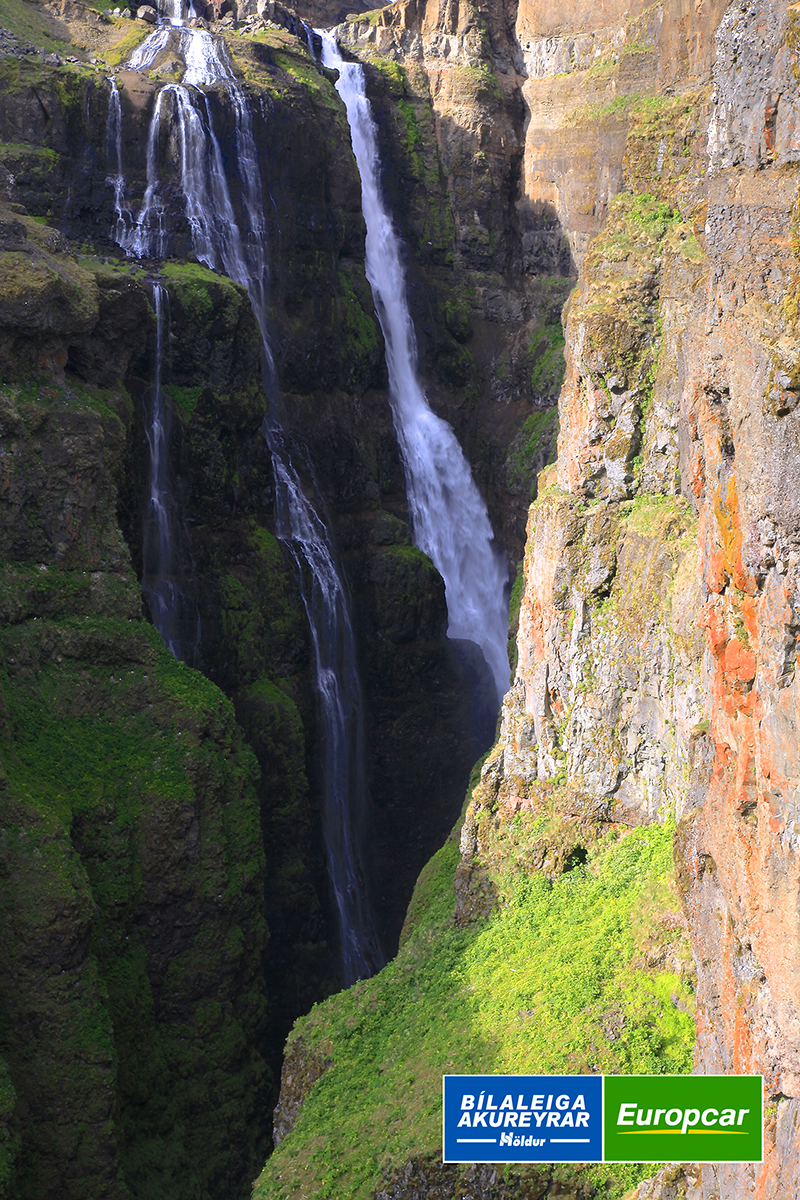
3. Visit the scenic Glymur waterfall on foot
You’ll have heard about many different waterfalls when planning your trip in Iceland. While many are known for their power, size, or surroundings, Glymur is best known for its height. Glymur is 198 metres (650 feet) tall, and is considered to be the second tallest waterfall in Iceland.
However, focusing just on Glymur’s impressive height can make you lose sight of its magic. The water here tumbles into a tight and glorious ravine, creating a stunning scene that’s well worth the walk.
To reach Glymur, you’ll need to complete a 7.4 km (4 mile) hike. It’ll take you on a rugged trail through some stunning landscapes.
Be aware that you’ll have to cross a river on a log along the way. This isn’t usually in place during the winter. Instead, if you’re looking to visit the waterfall in this season, take the alternative signposted route.
4. Explore Icelandic literary and cultural history at Reykholt
The village of Reykholt itself is an unassuming place. But take the time to look around and you’ll discover its truly fascinating history.
Reykholt was at one point one of the most important centres of learning in all of Iceland. It boasted perhaps the country’s best school along with a community of renowned politicians, historians, and writers.
One of the celebrated of these is Snorri Sturluson, the 12th-century poet who wrote some of medieval Iceland’s most celebrated literary works. At Reykholt’s Snorrastofa Museum, you can explore his life—and his grizzly death.
5. Venture onto the majestic Langjökull glacier
Look at a map of West Iceland and you’ll see that the region is bordered by two glaciers: Snæfellsjökull in the west and Langjökull in the east. Langjökull is the larger of the two—and it’s packed with opportunities for adventure.
For instance, you can venture beneath Langjökull’s ice at the Into the Glacier experience. Here you’ll be able to walk in the largest man-made ice tunnel on the planet. Alternatively, take a glacier hike across the ice and enjoy views of the region.
A great base for your glacier adventures is Húsafell, a village at the foot of the glacier. With its spa, hiking trails, and dazzling natural beauty, it’s definitely worth a visit itself.
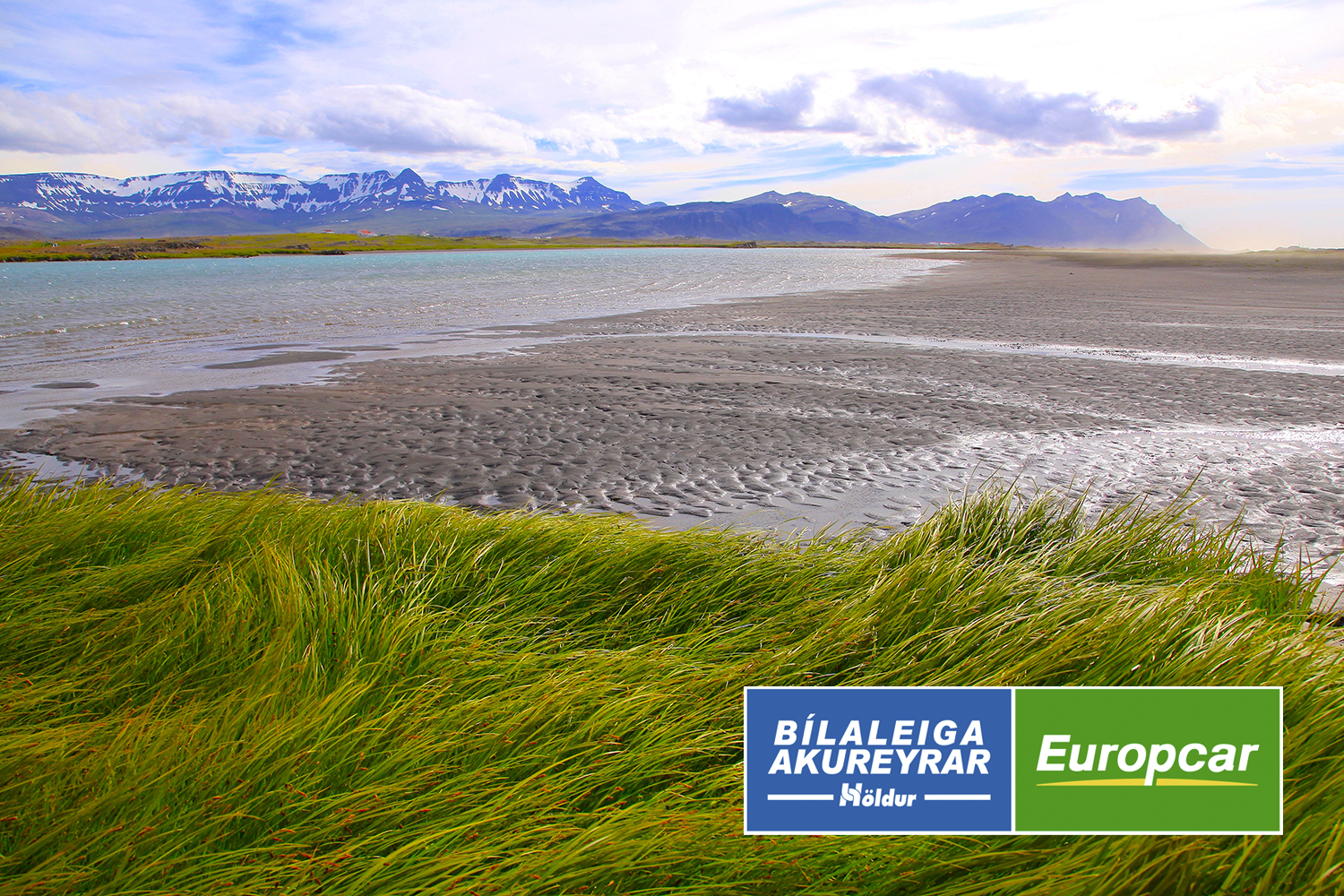
6. Hike around the serene Hvalfjörður
Hvalfjörður is an expansive and beautiful fjord at the southern end of West Iceland. Once known for its whaling station and naval base, today it’s better recognised for its stunning landscapes and wildlife.
Indeed, when touring the region, make the time to explore Hvalfjörður’s hiking trails. One route takes you up to Glymur waterfall, mentioned above. Or you can stop at Fossárrétt to see another elegant waterfall, with views over the entire fjord.
Nowadays, the Hvalfjörður tunnel takes passing traffic underneath the water. That means you’ll often have route 47, which skirts the fjord, entirely to yourself. Spend the day discovering beached boats, abandoned whaling stations, and the breathtaking scenery.
Find out more about tolls and tunnels in Iceland.
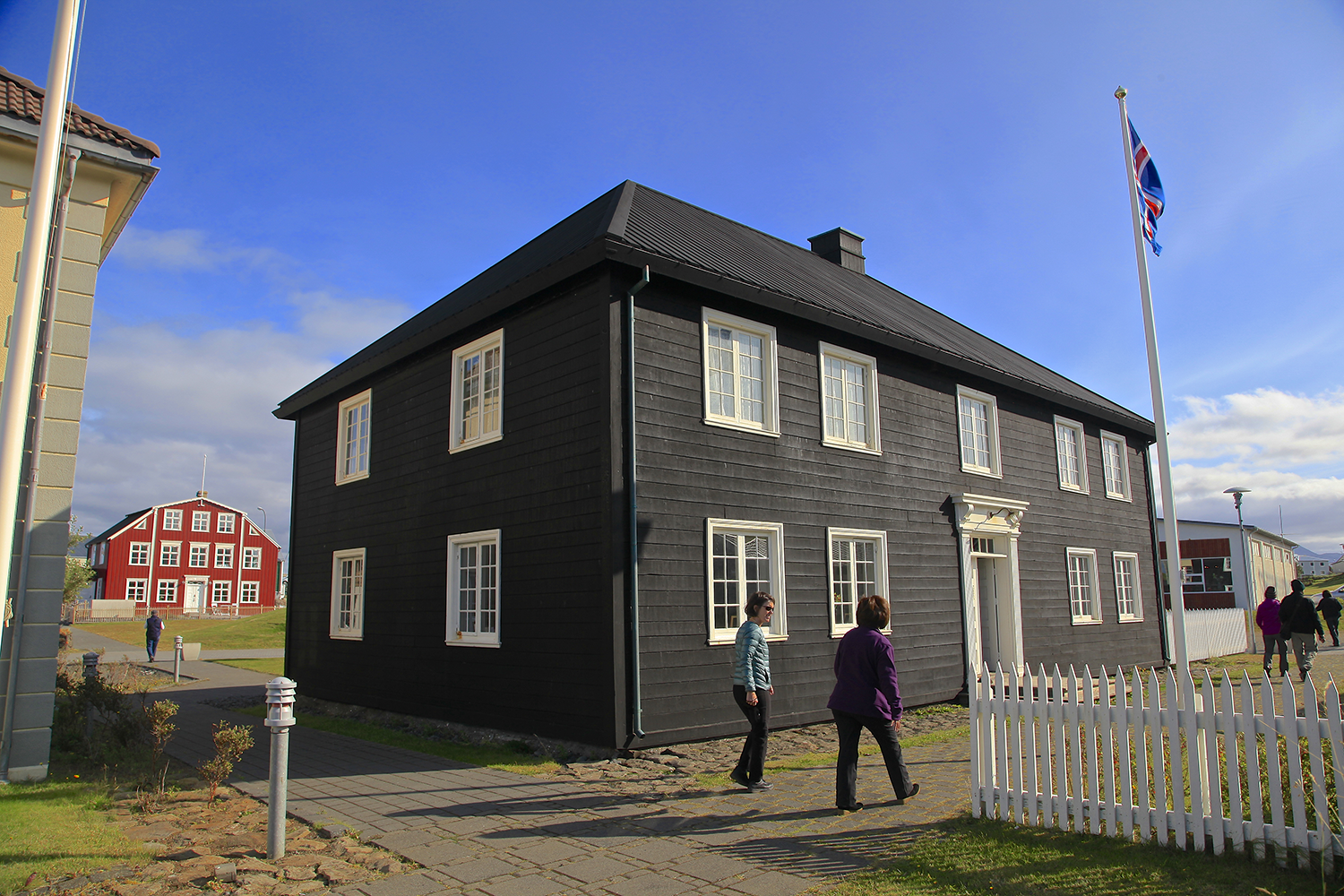
7. Tour the sights of the Silver Circle
While every visitor to Iceland has heard of the Golden Circle, the Silver Circle is a better-kept secret. This itinerary—which is typically completed in one or two days—shows you some of the highlights of the West Iceland region. These include:
- Hraunfossar. Spanning nearly a kilometre in width, Hraunfossar is a gentle waterfall whose waters emerge directly from a lava field.
- Barnafoss. Close to Hraunfossar, Barnafoss is another waterfall, this time known for a dark story about an old bridge, a tragic accident, and an enduring curse.
- Deildartunguhver. Said to be the largest geothermal spring in Europe, Deildartunguhver is a steamy, natural paradise.
- Húsafell. The village at the foot of the Langjökull glacier, Húsafell shouldn’t be missed—particularly as the Húsafell Canyon Baths are some of the best in Iceland.
- Reykholt. As explored above, Reykholt was once the cultural heart of West Iceland. Today, it’s home to fascinating museums about Icelandic intellectual life.
8. Plunge into a geothermal spa
Iceland’s geothermal spas are deservingly world famous. While the likes of the Blue Lagoon and Sky Lagoon are a little further south, West Iceland has some of the most indulgent and unique spas in the country.
Hvammsvík, for instance, is in a jaw-dropping location on the banks of Hvalfjörður. Here, you can relax in thermal pools or take a plunge into the ocean waters of the fjord itself.
Alternatively, Krauma—just outside Reykholt—is heated by Deildartunguhver, the most powerful hot spring in Europe. With its relaxation room and restaurant, it’s a particularly luxurious experience.
9. Stop off at the picturesque village of Stykkishólmur
On the north side of the Snæfellsnes peninsula, with its colourful houses and harbour, Stykkishólmur is often described as the most beautiful village in Iceland. We’ll let you be the judge of that, but there’s no doubt it’s in a marvellously picturesque location.
It’s an ideal place to stop if you’re touring West Iceland. Come for its museums about modern art, birdlife, and the wider region, and stay for the quality seafood restaurants.
Don’t miss the strange architectural form of Stykkishólmskirkja Church, which dominates the skyline.
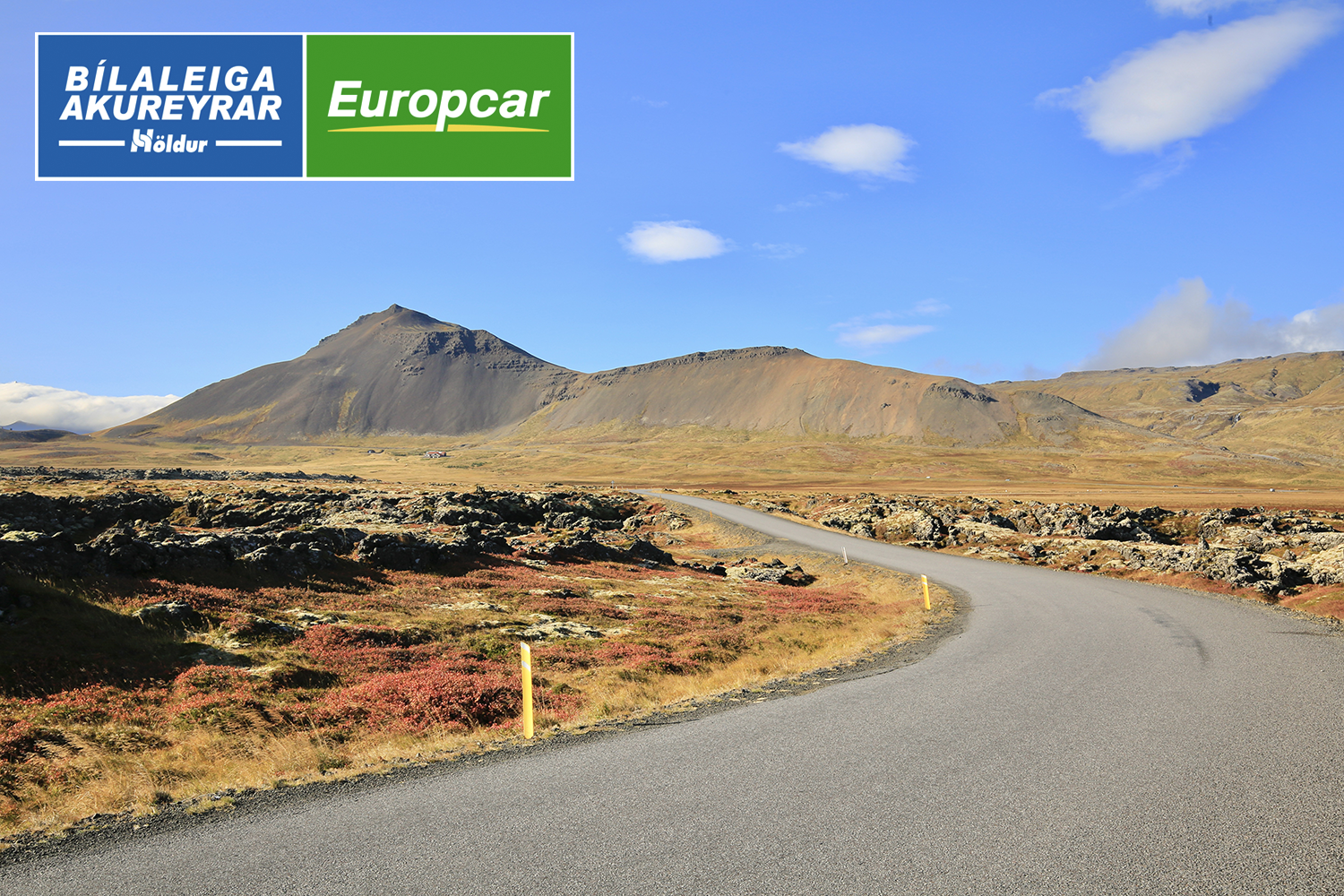
Travel tips for exploring West Iceland by car
Travelling to West Iceland? If you’re driving in the region, here are some important tips to bear in mind.
1. Watch out for gravel roads
In Iceland, not all roads are paved. While the RIng Road will be similar to roads you’re used to at home, many of these smaller roads are gravel.
This is true in West Iceland too. For instance, if you drive on route 54 on the north side of the Snæfellsnes peninsula, you’ll be on a gravel road. As it’s a single-track road, you’ll typically need to stop for oncoming traffic.
Many visitors to Iceland prefer to hire a 4x4 SUV when driving on these roads, for more reliable handling. This is not strictly necessary, but it’s often a good idea to opt for gravel protection in your insurance cover. (You can find out more about Höldur’s protection here.)
Whichever you choose, it’s always worth planning your route in advance, so you’re not caught out by unexpected challenges.
2. Check the weather forecast (and road conditions) before you travel
As you may know, the weather in Iceland is changeable—and in winter it can be quite extreme. This can affect your travel plans, so it’s worth checking the forecast before you travel.
That’s particularly important in winter. During this season, heavy snowfall can block some of the minor roads, and they’re not always frequently cleared. Before you venture out, always check whether the road you plan to travel on is open.
You can do that at road.is, the website of the Icelandic Road and Coastal Administration. They regularly update information about road conditions, mapping out any routes that remain impassable.
Your other best friend when it comes to checking the forecast is the Icelandic Met Office. The institution produces the most reliable weather forecasts available in Iceland.
3. Pack everything you need for an enjoyable and comfortable trip
While driving gives you the flexibility to move at your own pace, a successful road trip in Iceland will depend on a bit of planning. Beside your route and the type of vehicle you hire, another thing you’ll need to think about is what you pack.
Here are some things to remember:
- All your documents for your car hire. You’ll need a valid credit, a photo ID, and a driving licence that you’ve had for at least a year.
- Your phone, a charger, and emergency numbers. In Iceland, as in the rest of Europe, the number for the emergency services is 112. In an emergency outside of Höldur opening hours, please call +354 840 6000.
- A waterproof jacket and shoes. You can experience rain in any season in Iceland. It’s always best to be prepared.
For a full list of what you’ll need to hire a car with Höldur, check out our FAQs.
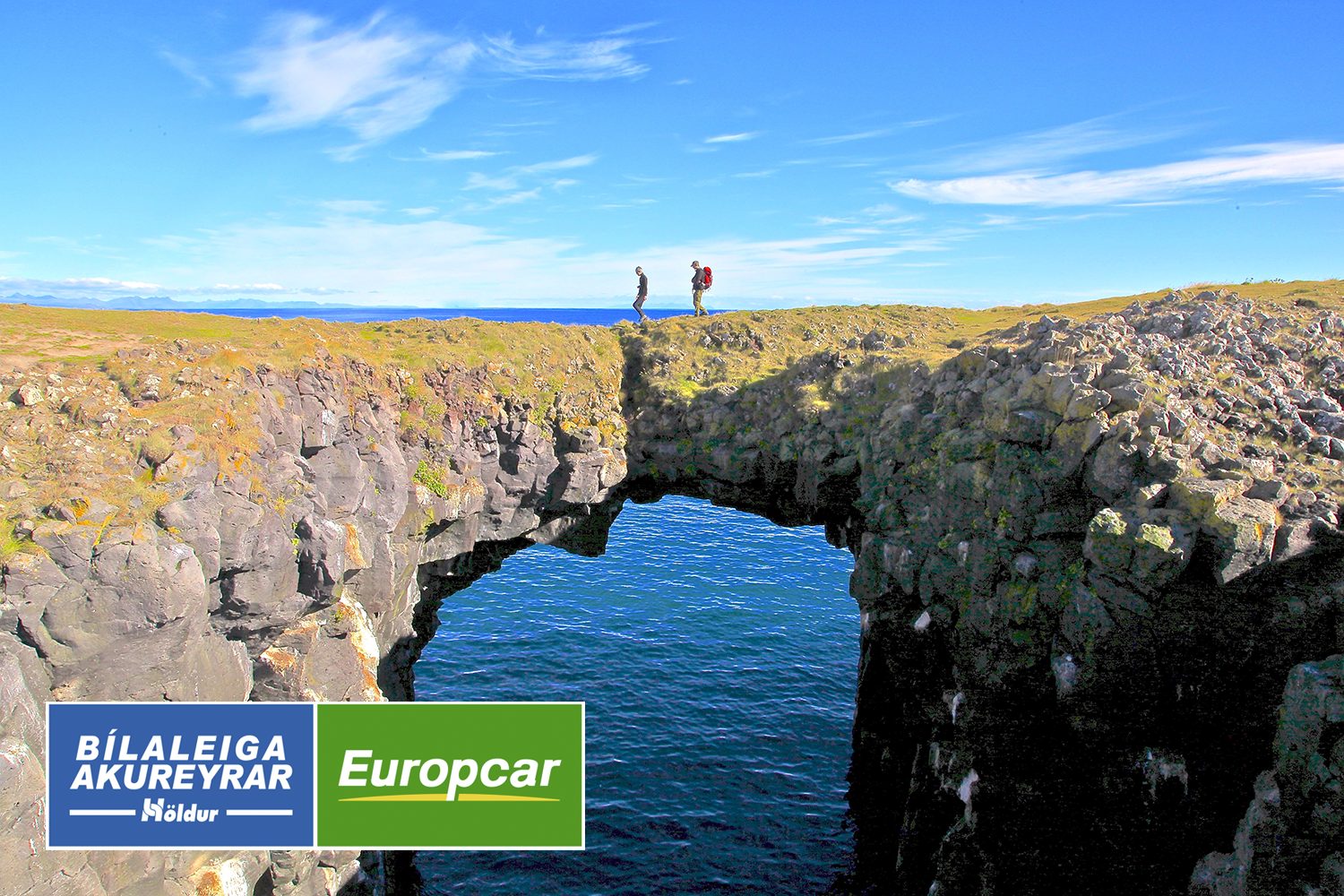
FAQ
Is West Iceland worth visiting?
While it’s often missed in favour of Iceland’s more famous sights—such as the south coast—West Iceland is definitely worth your time. It’s dramatic, diverse, and awe-inspiring.
When should I visit West Iceland?
You can visit West Iceland at any time of year. In summer, you’ll be treated with long evenings and incredible hiking opportunities. In winter, West Iceland makes for a glorious place to enjoy the northern lights.
If you’re travelling in winter, one thing to be cautious of is the state of the roads. While main roads, such as the Ring Road, will be regularly cleared of snow, others will be cleared much less regularly. Check the road conditions at road.is.
How long should you spend in West Iceland?
While tourists in a rush pass by West Iceland, it’s a region that can reward all the time you can give it. For instance, many visitors happily spend as much as a week in the region.
There’s plenty to see. The Silver Circle, for instance, takes about 4 hours just to drive—without any time for stopping. But if you want to hike, venture onto a glacier, visit a spa, or more, you’ll need at least three or four days.
Can you see the northern lights in West Iceland?
Yes, during the winter you can see the northern lights in West Iceland. Thanks to its sparse population, it has very little light pollution. Plus, its stupendous scenery provides an incredible backdrop to the aurora.
Find out more in our guide to the best time to see the northern lights in Iceland.
What is the best time to visit West Iceland?
There’s no single best time to visit West Iceland—it entirely depends on what you want to do.
For instance, the best time to see the northern lights in the region is between September and April. But if you want to go hike, camp, or visit the outdoors in another way, you may prefer to visit in summer.
Ultimately, it’s up to you! It’s a beautiful region whatever time of year you visit.
How to visit West Iceland?
One of the great things about West Iceland is just how easy it is to visit. From the city of Reykjavík, you can be in the region in less than an hour by car.
This is by far the best way to visit West Iceland. Driving yourself gives you the flexibility and freedom to move entirely at your own pace.
What are the top attractions in West Iceland?
The top attractions in West Iceland include:
- Snæfellsnes peninsula and Snæfellsjökull National Park
- Kirkjufell mountain
- Langjökull glacier
- Glymur waterfall
There’s more to look forward to! On August 12th, 2026, a total solar eclipse will take place in Iceland. West Iceland will offer some of the best views, making it an incredible spot to witness this rare event. Learn more in our solar eclipse guide.
Are there any guided tours available in West Iceland?
You’ll find many guided tours of West Iceland (and the rest of the country) when looking online or on the streets of Reykjavík. While these can be a great option if you’re travelling solo or want to meet like-minded travellers, you may prefer to drive yourself instead.
On a self-drive tour, you can enjoy the freedom to travel at your own pace and stop where you like. You can avoid the crowds of the tour buses too!
What should I pack for a trip to West Iceland?
There are of course two important things you’ll need to consider when you’re packing for a trip to West Iceland: the weather and the activities you have planned.
Whatever you do, there are some essentials: sturdy shoes and clothes to keep you warm and dry. Plus, don’t forget your camera, a phone, and all your chargers.
In summer, midge spray and an eye mask will keep the insects off and help you sleep at night.
How do I get to Snæfellsnes Peninsula?
It’s easy to reach Snæfellsnes, whether you’re coming from the north or south.
If you’re coming from the south, turn off route 1 at Borgarnes onto route 54. Once you’re on this road, you’ll be on the Snæfellsnes peninsula within an hour.
If you’re coming from the north, it may make more sense to join route 68 at the end of Hrútafjörður. From there, you can join route 59, which will take you to Snæfellsnes.
Is there an entrance fee to Snæfellsjökull National Park?
No, there’s no entrance fee to visit Snæfellsjökull. You don’t need to pay for parking either.
What are some family-friendly activities in West Iceland?
There’s lots to do for all the family in West Iceland:
- Join a whale watching tour from Ólafsvík
- Visit the tunnel beneath Langjökull glacier
- Go horse riding through Snæfellsjökull National Park
- Witness the breathtaking Glymur waterfall.
Can I visit the lighthouse at Malarrif?
You can visit the lighthouse at Malarrif. Today it’s part of one of the Snæfellsjökull visitor centres. You can walk around the site and photograph the lighthouse against the hills beyond.
How do I navigate the Hvalfjörður tunnel?
The Hvalfjörður tunnel takes you beneath the fjord of the same name. If you’re travelling on the Ring Road, you’ll have to pass through the tunnel.
There are no longer any tolls, meaning it’s completely free to use. There are also lanes in both directions, so you don’t have to worry about using the passing places.
Find out more about tolls and tunnels in Iceland.
When did Snæfellsjökull last erupt?
The last time Snæfellsjökull erupted was about 1,800 years ago, in roughly 200 AD. Before that, it’s thought to have erupted 4,000 and 8,000 years ago.
Even so, the volcano is still considered to be active. While no one is expecting it to erupt again soon, it’s still possible.
What are the best hiking trails in West Iceland?
There are lots of opportunities for hiking in West Iceland:
- Climb Kirkjufell, the iconic “church mountain”
- Explore the trails around Hvalfjörður
- Venture across the Langjökull glacier
- Walk the coastal path around Stykkishólmur
Are there any unique cultural sites in West Iceland?
West Iceland boasts a wide array of cultural sights, including:
- The Settlement Centre at Borgarnes, exploring the first residents of Iceland
- Reykholt village, where the poet Snorri Sturluson lived in the Middle Ages
- Akranes Folk Museum, sharing the life of ordinary people from West Iceland
- Stykkishólmur, one of the most picturesque villages in Iceland

Hire a car with Höldur to see West Iceland at its best
With its varied landscape and vast array of natural and cultural sights, West Iceland is best explored by car. With your own vehicle, you can experience the magic of the region at your own pace.
At Höldur, we’re the largest car rental operator in Iceland, with over 8,000 vehicles in active rotation. We’re also the local Europcar franchisee, bringing the brand’s renowned service to travellers in Iceland.
Explore our full range of vehicles to find the perfect car for your trip.

